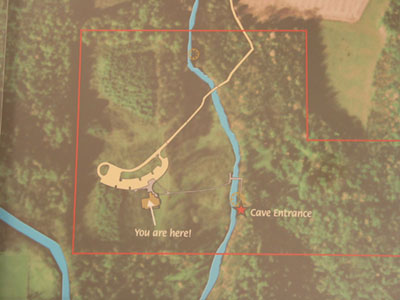 |
Mystery Cave starts as a
sinkhole is the Root River. In dry seasons the entire flow of the river
can disappear just downstream from the cave entrance. The "hole" is not
visible at the surface because it is "plugged" with larger rocks and
gravel, causing it to look like the bottom of many other rivers. The
space between the rocks is large enough to allow a good flow of water
into the cave system. The flow of the water, which is warm and contains carbon dioxide, (carbonic acid, just like in carbonated beverages) slowly dissolves part of the limestone rock and enlarges the passages over time. What starts as joints (cracks) in the limestone gradually becomes larger as the rock is dissolved, forming the caves. |
 |
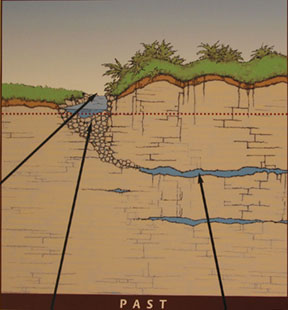 |
 |
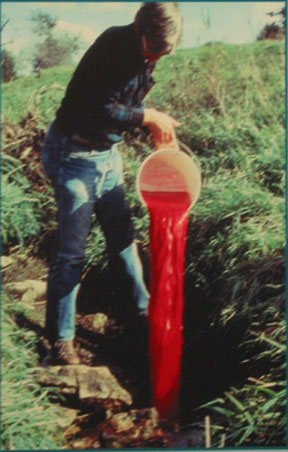 |
Geologists know where the water goes by doing dye tracing. In
the photo at left a geologist is pouring a dye into a sinkhole. Before
the dye is put into the sinkhole, bags of activated charcoal are
suspended in nearby springs. After the dye is put into the
sinkhole, the charcoal bags are tested at regular intervals for the
presence of the dye. By doing this the geologists know not only where
the water eventually reappears above the ground but also how long
it takes. From the dye trace reports in these other photos geologists
have concluded that the water that enters Mystery Cave at this part of
the Root River emerges at Seven Springs 8 hours later, bypassing a
large loop of the Root River. The Root River at Mystery Cave is a warm water stream, not good for trout fishing. The trout fishing starts at Seven Springs after water from Mystery Cave is cooled by the earth to provide the cool water that trout need to survive. |
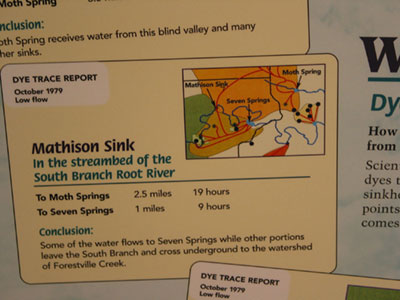 |
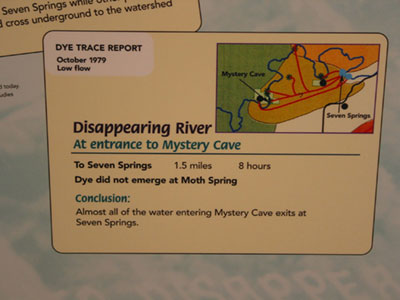 |
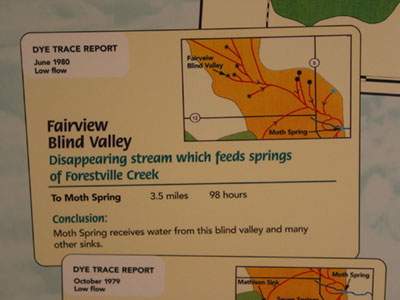 |
| Notice that the caves aren't always easy to navigate. Here a
photo of a cave explorer checking out "boxwork limestone" can just
squeeze into the larger cavern. This part of the cave is not open to
public tours but with the right training and work with at least two
partners (so if someone gets hurt, one can remain while the other gets
help) people can get permission to explore these parts of the cave
system. |
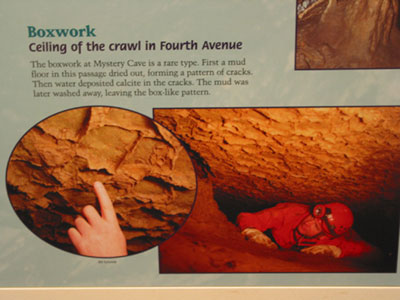 |
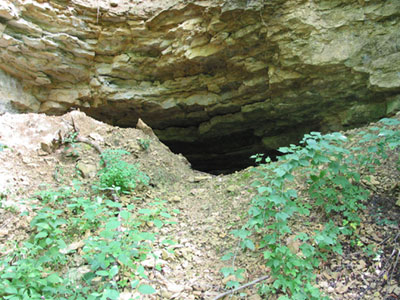 |
Here a photo of the original cave entrance shows the layering
of the limestone that is a typical feature of karst cave formations. |